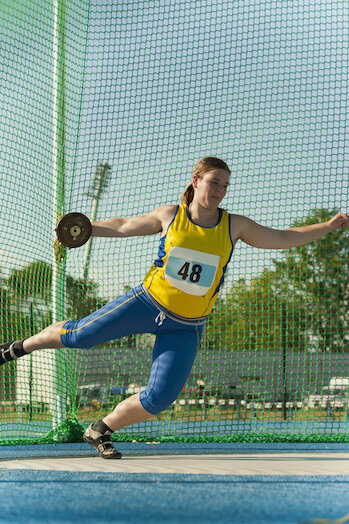Getting My 4throws To Work
Wiki Article
The Ultimate Guide To 4throws
Table of ContentsSome Known Facts About 4throws.The 30-Second Trick For 4throws4throws Fundamentals ExplainedThe Ultimate Guide To 4throwsNot known Facts About 4throws
Resource: US Air Force It's constantly enjoyable to see that can throw something the outermost, whether it's a round, a Frisbee, or also a rock. Track and field is the area where you can toss things for distance as an actual sport. There are 4 significant tossing events laid out listed below.The males's university and Olympic discus evaluates 2 kilos (4.4 extra pounds). The ladies's college and Olympic discus evaluates 1 kilo (2.2 pounds). The discus is tossed from a concrete circle that has to do with 8 feet in size. The athlete's feet can not leave the circle before the discus lands or the athlete will fault and the throw won't count.
The athlete that tosses it furthest from the front part of the circle (and within the lawful area) wins. The javelin is something like a spear. This occasion ought to be overseen in all degrees to make sure no one is harmed. The men's university and Olympic javelin weighs 800 grams (28.2 ounces) and has to do with 8.5 feet long.
The Only Guide for 4throws
The athlete that throws it outermost (and within the lawful area) wins. In the shot placed event professional athletes throw a steel ball. The men's college and Olympic shot evaluates 16 pounds. The women's college and Olympic shot evaluates 4 kilos (8.8 pounds). This sport actually started with a cannonball tossing competition in the Middle Ages.The front of the circle has a steel board called a toe board. The professional athlete can not touch the top of the toe board or action over it throughout the throw. The athlete holds the shot near to his/her neck in one hand. There are 2 usual tossing strategies: The first has the athlete slide or "glide" from the back to the front of the circle before releasing the shot.

3 Simple Techniques For 4throws
In this track and field tossing occasion the athlete tosses a metal round affixed to a deal with and a straight cord concerning 3 feet long. The guys's university and Olympic hammer evaluates 16 pounds. The ladies's university and Olympic hammer considers 4 kgs (8.8 extra pounds). The hammer is tossed from a concrete circle 7 feet in size (similar to the shot put) but there is no toe board.The athlete rotates a number of times to gain energy before releasing and tossing the hammer. Balance is vital as a result of the force generated by having the heavy round at the end of the cable. The professional athlete that throws it furthest from the front component of the circle (and within the legal location) wins.
We located that people are able to toss with such velocity by storing elastic power in their shoulders. This is achieved by positioning the arm in such a means that the arm's mass resists motions created at the upper body and shoulder and revolves backwards away from the target. This "cocking" of the arm stretches the ligaments, tendons, and muscle mass going across the shoulder and stores flexible power (like a slingshot).
We located that humans are able to toss with such velocity by storing flexible energy in their shoulders. This is accomplished by positioning the arm in such a means that the arm's mass resists activities produced at the torso and shoulder and turns backwards far from the target. Discus for sale. This "cocking" of the arm extends the tendons, tendons, and muscle mass crossing the shoulder and shops flexible power (like a slingshot)
4throws Fundamentals Explained
(https://share.evernote.com/note/53b32902-287b-0b49-bf30-f4c60cf2a323)This torso rotation generates large forces needed to extend the flexible tendons and ligaments in the shoulder. The lowering of the shoulder changes the orientation of many shoulder muscles, including the pectoralis major (the large breast muscle mass), click here now which is important to keeping energy. Finally, we discovered that low humeral torsion (the twisting of the arm bone) permits us to store more energy and thus, throw quicker.
Common one-armed tossing techniques consist of overhand throwing (launching with the arm above the shoulder) and underarm throwing (releasing with the arm listed below the shoulder). With both arms, overhanging throwing and chest-passing are common activities. The sort of throw used is very affected by the properties of the projectile: tiny, heavy objects are held and pressed away from the body (e.g.
Getting The 4throws To Work
weight throw, keg throw); smaller sized, lighter items such as spheres and darts often tend to make use of a prolonged overarm strategy where range or speed is called for, and an underarm technique where better accuracy is called for. In these sports, many tosses are taken from a static position or limited location. Some sports do include a brief run-up to the throw line, for example javelin throw and ten-pin bowling.Report this wiki page